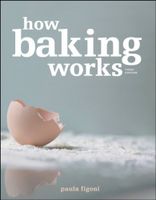Advertisement
8. Caramelization and Maillard Browning Occur on Crust.
Appears in
By Paula Figoni
Published 2003
As long as water continues to evaporate off the crusts of baked goods, evaporative cooling keeps the surface from rising in temperature. Once evaporation slows significantly, however, surface temperature rises quickly above 300°F (150°C). The high heat breaks down molecules such as sugars and proteins on the surface of baked goods. The result is the formation of brown color and a desirable baked flavor. As might be expected, these reactions are important in almost all baked goods because essentially all baked goods contain sugars and proteins.

